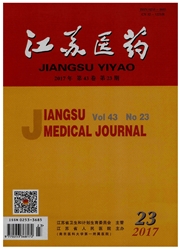

 中文摘要:
中文摘要:
目的探讨2个中国汉族Leber遗传性视神经病变(LHON)家系的遗传学基础。方法提取所有参与者外周血全基因组DNA,并对2个先证者及其他母系成员进行详细的眼科检查。采用PCR方法扩增NDlm3460G〉A、ND4m11778G〉A和ND6札14484T〉C三个原发突变,Sanger测序明确原发突变后,对2个先证者扩增线粒体DNA(mtDNA)全序列;测序结果与最新剑桥标准mtDNA序列比对,分析2个家系的线粒体单体型。结果2个家系均携带ND4m.11778G〉A原发突变,但LHON的外显性、发病年龄及病情严重程度存在一定差异。2个家系mtDNA全序列测序结果共存在45个mtDNA变异位点,分别归属于东亚单体组R11b和B4b。结论除受ND4m11778G〉A纯合原发突变影响外,线粒体单体型也可能调控LHON。
 英文摘要:
英文摘要:
Objective To investigate the genetic hasis for two consanguineous Chinese Han Leber's hereditary optic neuropathy(LHON) families. Methods All participants in two families were examined clinically and the genomie DNA was extracted from peripheral venous blood. PCR and Sanger sequencing were performed to screen mutations in the whole mitoehondfial DNA (mtDNA). The sequence results were analyzed and compared with the updated consensus Cambridge sequence to identify new mutations and classify the haplotype. Results Genetic analysis identified the ND4 rn. 11778G〉A primary mutaion in both families. The whole mtDNA sequence analysis results showed 45 variants, which classified the two families separately to haplogroup Rllb and haplogroup B4b. Conclusion Primary mutation ND4 rn. 11778G〉A is very likely the pathogenieal mutation for the two LHON families. In addition, belong to different haplogroups would like the main reason for the differences in penetranee, the age of onset and the severity between the two families.
 同期刊论文项目
同期刊论文项目
 同项目期刊论文
同项目期刊论文
 Comparison of contrast-enhanced ultrasonography and contrast-enhanced MRI for the assessment of vasc
Comparison of contrast-enhanced ultrasonography and contrast-enhanced MRI for the assessment of vasc Targeted Next-generation Sequencing Reveals Novel EYS Mutations in Chinese Families with Autosomal R
Targeted Next-generation Sequencing Reveals Novel EYS Mutations in Chinese Families with Autosomal R 期刊信息
期刊信息
